Growing up, I never owned a copy of MS Flight Simulator or any other flight sim. I played it (MS Flight Simulator) a few times at friends’ houses, and I usually crashed. Partially, I never owned a copy because I wasn’t too interested in it, but a larger part was that my games were purchased with money from cutting lawns, raking leaves, shoveling driveways, and doing chores around my parents’ home. Purchasing a good joystick and a copy of Flight Simulator was a bit out of my budget, while purchasing older games that had been traded in to Electronics Boutique was a bit more attainable for me. People generally didn’t part with their copies of Flight Simulator. I have a little more money now, so I have a copy of Flight Simulator. This being the publication that it is, you can bet it’s a rather old version.
Bruce Arthur Artwick was born on the 1st of January 1953 in Norridge Illinois. He attended Triton Junior College and then transferred to University of Illinois at Urbana–Champaign. While in college, he roomed with Stu Moment who was attending the university’s Institute of Aviation. The two became good friends. An important bit to note here is that this university had PLATO. There were several games on the PLATO system, but among the popular ones was Airfight, which was made in the summer of ‘74 by Brand Fortner and Kevin Gorey. This game had wireframe 3D graphics and would have been viewed on monochrome amber displays. Both Bruce and Stu would have been exposed to this game. Bruce’s thesis was “A versatile computer-generated dynamic flight display” in May of ‘76. The software was written in FORTRAN, ran on a PDP-11, and featured 3D graphics. Bruce graduated later that year.
We know that Bruce was working on graphics software after graduation as he penned an article (3D computer graphics …you don’t need glasses!, page 50) for Kilobaud magazine in October ‘77 which described 3D graphics software techniques. That same year, Mr Artwick founded subLogic. I am not sure if Stu was with him at the very beginning, but he wound up there by 1978, and the two incorporated the company.
In early January of 1980, subLogic released Flight Simulator 1 for the Apple ][ (A2-FS1) and a version of that same program for the TRS-80 (T80-FS1).
In June of that year, subLogic bought a Cessna 150 and began testing the calculations used in the game for accuracy.
FS1 was extremely popular at the time, and the IBM PC launched a year after the debut of the game. As one may expect, Microsoft came looking for a copy. A version of the game was made for the PC by subLogic and sold by Microsoft as Microsoft Flight Simulator in November of 1982. This game was shipped on 5.25” floppy that was used as the bootdisk for the PC. The graphics were much improved, had color, and 9 views out of the cockpit. The instrument panel was modeled after a Cessna 182. This version also introduced weather, seasons, and time of day. Due to being a bootdisk game, ctl alt del would perform a warm reset.
Following Microsoft Flight Simulator, subLogic made a few more updates to the code base and release their Flight Simulator 2. This was ported to Apple II, Atari 8-bit, Commodore 64, PC-98, Amiga, Atari-ST, Tandy CoCo 3. These ports would be released over time: Apple II in 1983, Atari 8-bit and C64 in 1984, PC-98 in 1986, and the rest in 1987. This version of the game allowed for loading supplemental scenery files from more disks. These versions of Flight Simulator would be the last sold directly by subLogic to the retail market.
The additional scenery disks paved the way for Microsoft Flight Simulator 2 in 1984. This version was essentially the same, but with improved color and supplemental scenery disks available.
After Microsoft FS2, subLogic released Jet. This isn’t part of the series, but it was a combat flight simulator with slightly simplified controls. It was capable of using the scenery disks from Flight Simulator. It was released for MS-DOS, C64, Apple II, Atari ST, Amiga, Macintosh, NEC PC-9801 between ‘85 and ‘89.
Microsoft Flight Simulator 3 was released in mid ‘88. PCs had improved significantly by this point, and those improvements are immediately apparent in the graphics of the game. The graphics of version 3 (in EGA) are similar to those of the ST and Amiga versions of FSII.
Beyond the graphics enhancements of FS3, there are additional aircraft (Gates Learjet 25, Cessna Skylane, and Sopwith Camel) and additional airports. A player could also customize the display/views. This version introduced an exterior view. Shipping with this version of the game, there was a tool to convert subLogic’s scenery files into MS FS scenery files and then used within the game. This version was the last to be developed by subLogic for Microsoft.
The same year that MS-FS3 was released, Bruce left subLogic but retained the rights to Flight Simulator. Stu Moment stayed at subLogic. Bruce then founded the Bruce Artwick Organization (BAO).
Flight Simulator 4 was a larger and more complex game than its predecessors released in 1989. It was developed by BAO for Microsoft. This version of the game saw traditional graphical enhancements, but in particular the aircraft models were far better than they previously were. Random weather patterns were introduced to enhance realism, and dynamic scenery was added. This version of the game also introduced a sailplane along with the ability to create experimental aircraft.
MS-FS4 has expansions, the largest and most common were:
Aircraft and Scenery Designer (ASD)
create scenery files that can be used in game and shared with others
create aircraft that can be used in game
Boeing 747 cockpit
Sound, Graphics, and Aircraft Upgrade (SGA)
digital synth support
high resolution support
more aircraft
Aircraft Adventure Factory (AAF)
more advanced aircraft creation capabilities
scriptable control of flight characteristics, airspeed, altitude, etc
Microsoft Flight Simulator 5 was the last version for MS-DOS, and it was released in late 1993. This version was the first to use textures, and as such the old scenery files were no longer compatible. Improvements were made to all parts of the simulation, from weather to unique cockpits for each aircraft.
Microsoft Flight Simulator 5 was the last version of Flight Simulator not developed by Microsoft itself. BAO had grown from 6 in 1984 employees to more than 30 in 1995. BAO had made other games and simulations over the course of its life, and had also made more professional simulations for the FAA. In 1995, Microsoft acquired BAO and the rights to Flight Simulator. This ended quite the run of Flight Simulators made by Bruce Artwick, but he was still a consultant on Flight Simulator for Microsoft.






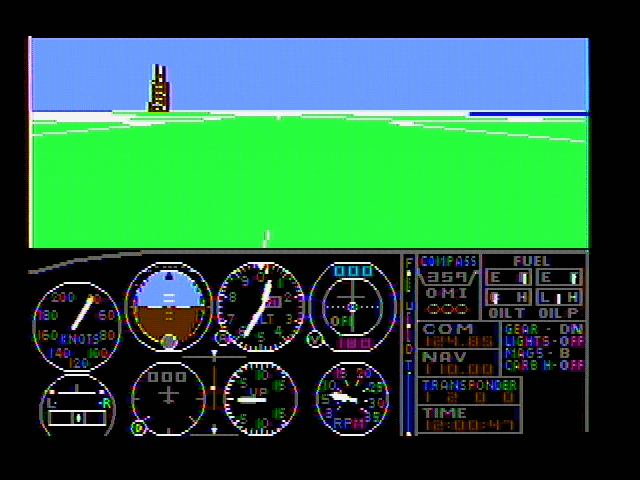


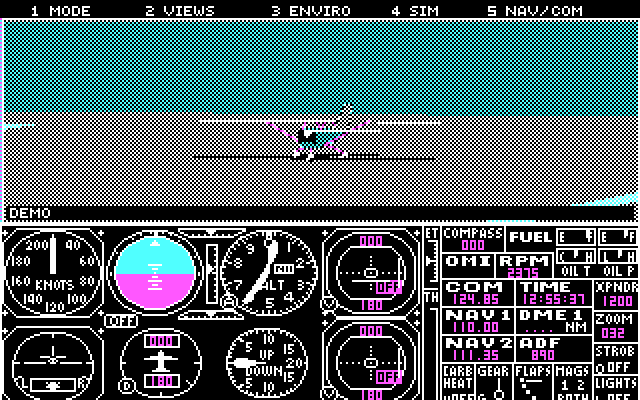

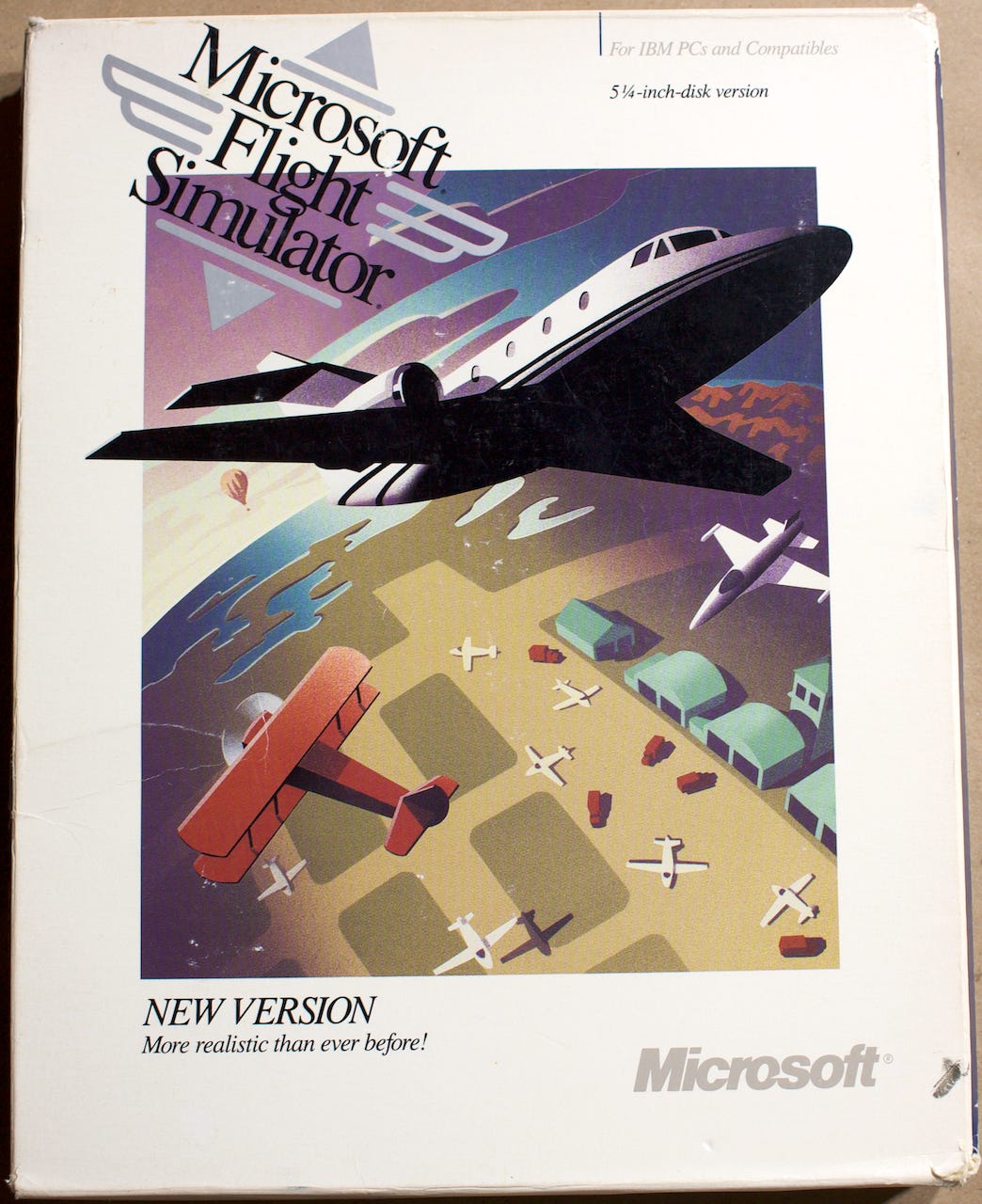

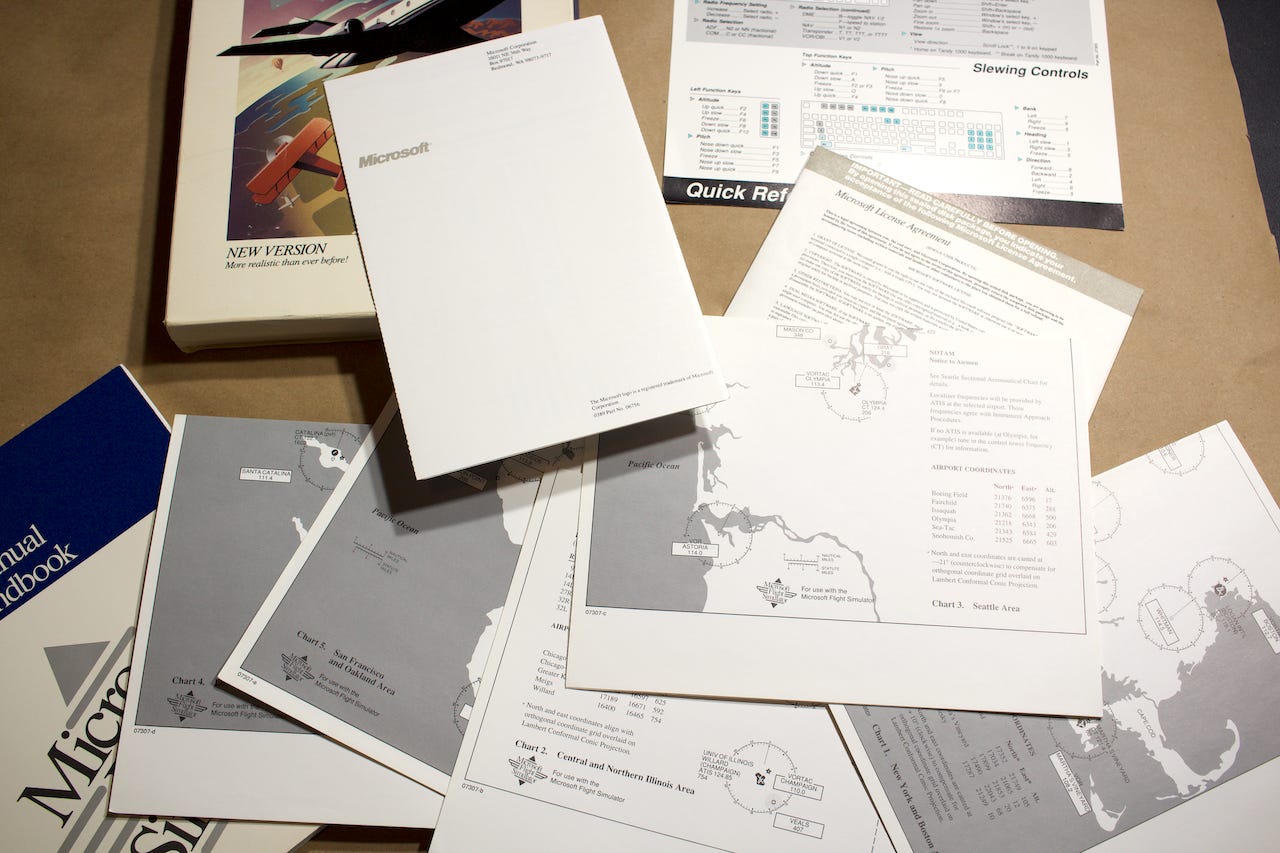


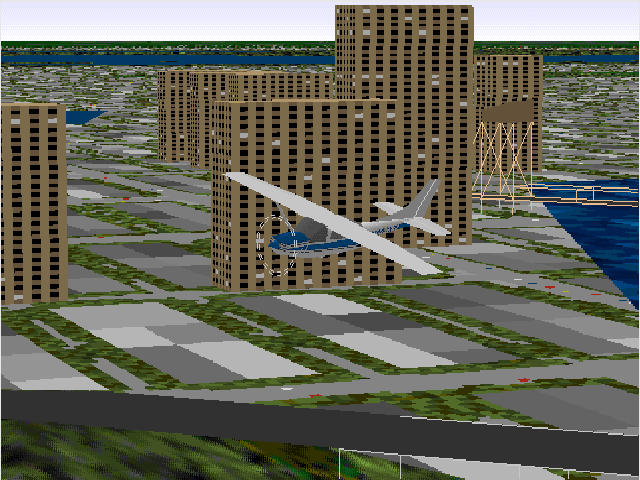


Share this post